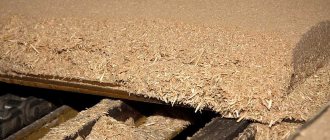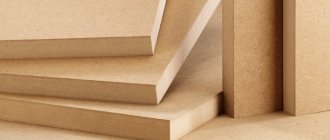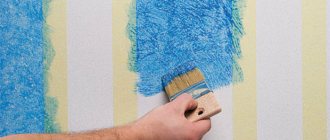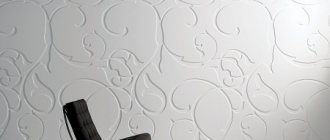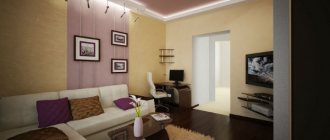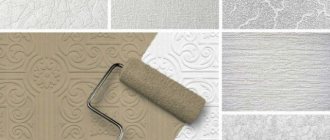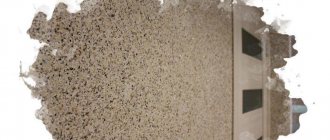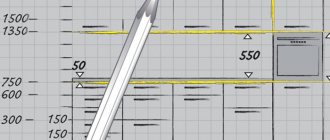A huge variety of decorative canvases
Today, the number of people doing repairs with their own hands has increased significantly. This allows you to save a lot of money. But for such work it is necessary to delve into all the subtleties and nuances of the process. When it comes to decorating walls in a home, the key parameter is the size of the wallpaper: its width and length. This article will look at different types of canvases by size, the number of wallpapers in rolls and other indicators.
Standard sizes
Knowing the size of the wallpaper, it will be possible to calculate the exact quantity for covering a particular room. At the same time, there are standard indicators, the width and length of which are the most common.
The fabrics are packaged in rolls that look like large tubes. The greater the thickness of the coating, the wider the diameter of the product. The generally accepted standards include the most popular sizes that are sold on any construction market.
Standard coating dimensions
Standard width canvases make up the main range. The width of such a roll is 0.53 m and the height is 10.05 m. There are also wide wallpapers for walls, their width is higher than usual and is 1.06 m.
How to find out how many square meters
Regardless of which options you use standard or meter wallpaper, you need to know how many meters there are in a roll. To do this, you need to perform some calculations; they will help determine the required volume for the walls of the room.
Since the sheet has a rectangular shape, the area of the surface to be covered is calculated by multiplying the length and width:
- If the dimensions are 10.05 m by 0.53 m, then the formula is 10.05 * 0.53 = 5.3 m2 - this is an area indicator.
- With dimensions of 15 m and 0.53 m, it turns out - 15 * 0.53 = 7.95 m2 (area).
- 25 m and 1 m gives an indicator of 25 m2 of total area.
To determine the required quantity for one room, it is recommended to measure its walls using a tape measure. After this, the total area of the walls is calculated. It is advisable to take with a reserve; it is better to have some left over than to then go shopping in search of the missing material with the required pattern and color.
Roll width
This indicator can vary quite significantly depending on the geographical location of the material’s production. The most common widths are:
- 0.53 m is the most common solution. Such canvases are produced in factories all over the world. This variety is conventionally called half-meter.
- 0.7 m is a fairly popular canvas size among European manufacturers. Since goods from abroad are distinguished by their quality and durability, such solutions have also gained popularity in our country.
- 1.06 m - the width of this variety is 2 times larger than the standard version. Using such wallpaper can significantly reduce the amount of work. Typically, this width is used in the production of heavy non-woven wallpaper. Conventionally referred to as meter coverings.
In our country, 2 standards are generally accepted - 0.53 and 1.06 m, so products are produced only in these sizes. Standard wallpaper with a width of 0.53 m can be made from any materials and complemented with texture or original patterns.
Meter sheets are often made on a vinyl basis, and the backing is made of non-woven fabric. The backing guarantees ease of gluing, and the dimensions of the canvas allow you to reduce the number of seams on the surface to be glued and hide the joints.
You can learn more about wide canvases in the following video.
Experts recommend meter-long wallpaper for beginners in the construction craft, as they are much easier to paste. You can cover a fairly large surface area at one time.
Wide products
Wallpaper width of 70 cm is mainly used by imported manufacturers. European factories offer products of any convenient width. This solution allows us to satisfy any buyer. Basically, canvases of this width are used to implement design ideas.
How to find out the area of a room?
To calculate the area of a room, you can use formulas, or calculate the area of each wall, and then summarize the results. Please note that walls with doors and windows are considered completely, without deducting spans. This is done so that there is a small reserve.
Now let's try to figure it out: how many meters are in 1 roll of wallpaper? As mentioned above, the roll can be of different widths depending on its type (see above), which means that it can cover different areas.
Roll length and area
The situation with the length of the coating is much simpler than with the width. There are several basic additional solutions and one that is the most common.
The standard length for wallpaper is 10.05 m - most canvases are produced in this size. An additional solution is a length of 15 m - used in the production of vinyl coverings with a standard width and pattern for further painting. Another option is a length of 25 m - used for the production of meter-long non-woven coatings for painting.
There is nothing wrong with a wide variety of covering heights. You just need to decide how many whole canvases you can create from them. But for owners of buildings with a ceiling height of up to 2.6 m, the use of such finishing can become quite problematic. There may be quite a large amount of waste left, or you will need to do the gluing yourself, leaving a large allowance at the bottom. In this case, the horizon of the floor may disappear, as a result of which it will not be possible to cover it with a plinth. You can get rid of these difficulties by using canvases of standard height or by correctly measuring the height of the coating.
You can calculate the required amount of material yourself or use the services of a consultant. You will definitely need to clarify whether it will be possible to purchase additional wallpaper in case there are still not enough of them.
When calculating how much wallpaper is contained in a roll, you need to rely on GOST data. Length has a strong effect on roll area. The following options exist:
- With generally accepted roll parameters, the area is approximately 5.3 m².
- With a length of 15 m and a standard width, the area is 7.95 m².
- With a length of 25 m and a width of 1.06 m, the area will be 25 m².
When calculating the required amount of wallpaper, you need to pay attention to the height of the ceiling. This indicator is of key importance. If the height is higher than 2.5 m, then you will need to use more wallpaper, but there will also be an increase in unused leftovers. For more detailed calculations, you can use the following table.
Choosing the width of a roll of wallpaper for walls
Since the required number of rolls is calculated based on the size of the room, the main parameter is the area of the surface of all structures to be pasted. You can determine the dimensions of all the walls and add them up. You can also count the number of stripes based on the old coatings that were used on the walls before the renovation. For the ceiling, calculations are always made separately based on the design dimensions of a particular room.
The area of solid walls must be determined using the standard formula - by multiplying the width by the height. When covering a room in the form of panels, exactly the required height is measured. The area of walls on which there are doors or windows is calculated in the same way as for solid surfaces without spans. In this case, there is a small margin left for correcting any errors or adjusting the drawing. Protrusions or niches are measured separately if they are covered with coatings other than the main color.
Important
A small excess of material allows you to feel more confident when combining fragments of a pattern or pasting various architectural elements.
Wallpaper type and size
Coatings from different components are produced in different sizes. When you know the size, sometimes it is possible to determine the type of canvas or vice versa.
Generally accepted production rules are:
- Paper webs are small in size. The width is often standard and is 53 cm.
- Foamed vinyl sheets can be either meter or half meter. Meter versions are produced exclusively with a non-woven backing.
- Hot stamped vinyl products are often made in large widths.
- Most silk fabrics have small widths.
- Materials for further coloring are long and can be produced in different widths.
- If the dimensions do not fit any standard, then vinyl wallpaper made in Europe is used. The cost of such products is quite high and they are often used to implement unusual design solutions.
- The sizes of photo wallpapers may vary; they are indicated on the product packaging.
As you can see from the article, the sizes of wallpaper coverings can vary quite a lot. There are standard solutions with a given width and height, but there are also a large number of other options. So-called meter-long canvases have a number of advantages over half-meter ones; they will significantly simplify the gluing procedure. Using the images used in the article, you can see all the coating options.
Common wallpaper sizes
The large size range of wall coverings is explained by the variety of materials, textures, types, manufacturers, as well as countries of origin. An approximate list of standard values for common types is as follows:
- paper wallpaper, as a rule, has a width of 53 centimeters and a length of 10 m (sometimes 8 and 12 m);
- vinyl sheets – 50 cm wide and 15 m long;
- non-woven material - width 106 cm, footage - 10 or 12 m;
- textile coverings can have a width ranging from 53 to 80 cm and a length of 10 m;
- fiberglass parameters - 53 cm width by 10 m length.
Interesting! In high demand, meter-long wallpaper for painting is found in rolls of 25 or even 50 m, and super-dense non-woven wallpaper, used as accent elements, is available in rolls of 5 m.
Note! The standard width of the canvas from British, Italian and some German manufacturers is 74 cm, so it’s worth double-checking the markings.
How many squares of wallpaper are in one roll?
As mentioned above, wall coverings have different sizes depending on the type, texture or manufacturer. It is worth considering the most popular finishing materials, most of which have a standard panel width.
- Paper wallpaper canvases have a width of 53 cm (half a meter) and a length of 10 m, less often - 8 and 12 m.
- Vinyl – 50 cm in rolls of 15 meters
- Non-woven fabrics are available in widths of 106 cm (meters) and 10 and 12 meters in length.
- The width of textile coverings is from 53 cm to 80 cm, and the roll contains 10 meters.
- Fiberglass for the average consumer is produced 53 cm wide and 10 m long.
For wholesale buyers and construction organizations, factories offer wallpaper of the same quality in widths of 80 cm, 1 and 1.5 meters to speed up finishing work. Washable wallpaper is available for sale, the width of which is 60 cm, and the length of the canvas is 8, 10 and 12 meters. Imported coatings made in Italy, Germany or Belgium have rolls of 74 cm with a length of 10 m. You can find rolls of non-standard sizes - 5 m or 25 m. Sometimes in the markets, scraps of production of non-standardized length are sold, but the width is standard.
Advice
Non-standard production scraps can cost half as much; they are recommended to be purchased if you are planning a “patchwork” combination or pasting of part of the wall.
